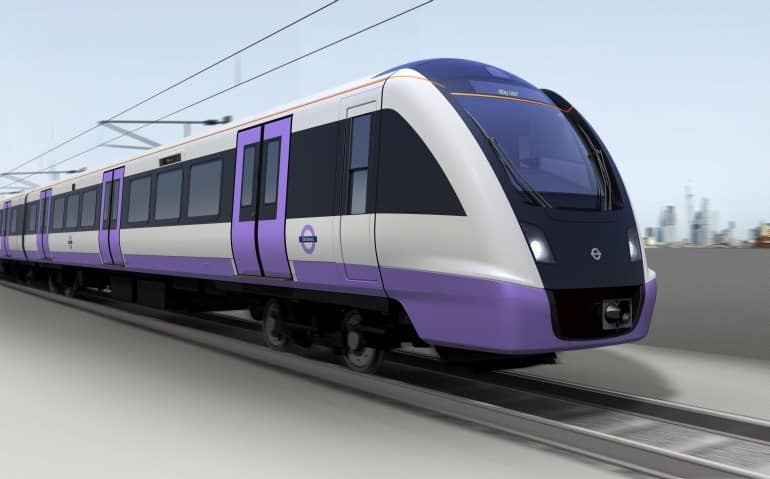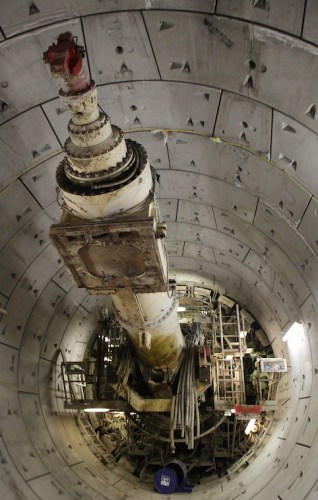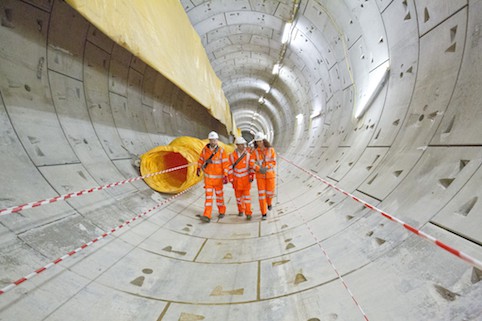With Britain’s railways currently undergoing the biggest programme of investment since the Victorian age, 2014 is an exciting year to be a rail engineer. In March, Network Rail unveiled plans to invest £38bn in the UK’s tracks and stations, while Transport for London (TfL) and the Department for Transport also confirmed the extension of the Crossrail project west to Reading. Although this represents plenty to keep the industry busy for a while, a little further into the future HS2, Crossrail 2 and a HS2 extension may also be on the cards. In the meantime, in the capital, TfL is continuing to invest several billion in the Underground — and all of these projects will require new rolling stock. In summary, there’s a lot of work about.

‘The current government’s policy of infrastructure investment is crucial to the continued growth of the UK rail engineering industry,’ explained Phil Hodgson, department manager for rail and property at engineering recruitment specialist Matchtech. ‘We have already lost many candidates abroad to huge projects in the Middle East — such as the Doha Metro, Abu Dhabi Metro and Riyadh rail upgrades — so it’s vital we have similar high-profile UK projects to compete internationally. The Network Rail project could bridge the project pipeline gap between Cross Rail, Cross Rail 2 and the uncertainty that surrounds HS2 to attract and retain UK engineering talent.’
Already, demand for staff is being generated. ‘Recruitment of skilled rail engineers has been buoyant across the board, and there is a great deal of demand for every skill set,’ Hodgson confirmed. ‘Those that are hardest to find are signalling, power professionals and permanent way engineers, as well as tunnelling specialists and building information modelling (BIM) consultants.’

Demand for rail specialists may be high — but is it possible to put a number on this? In an attempt to do just that, the National Skills Academy for Railway Engineering (NSARE) completed a sizeable skills forecasting project in early 2013. The resulting ‘Forecasting the Skills Challenge’ report estimated the workforce required to deliver personnel for all the track, signalling and telecoms, electrification and rolling stock build and refurbishment projects in the pipeline —
a total of up to 10,000 people over the next five years, taking into account retirements, natural wastage and growth driven by investment.
‘As a percentage of the current workforce, the two areas with the largest gaps are traction and rolling stock, with the potential for a need of more than 4,000 new people in the next five years,’ said Elaine Clark, head of training and skills at the NSARE. ‘This is followed by electrification as a result of planned major projects following a period of very little new electrification. Here, around 1,000 new people are required. It’s worth noting that the overall workforce in electrification is small — around 3,500 in total, so this expansion constitutes a large percentage of the whole. Then comes signalling and telecoms. The area with the lowest absolute gap is track — however, the numbers of those working in this area are bolstered by a large number of low-skilled transient workers. This masks shortages at higher skills levels — for example, in track design.’

Meanwhile, the building of updated rolling stock for these new lines is well underway. Having recently won a £1bn contract to build trains for London’s Crossrail, Bombardier Transportation is at the forefront of those seeking the right staff. ‘We have a continuous demand for a broad range of engineers, and are planning to take on 100 graduates to support the Crossrail project,’ said Ken King, head of Bombardier’s engineering management office and quality for western Europe, the Middle East and Africa. ‘We already have 350 engineers in our Derby office, with 180 of these working on Crossrail — given that we have a total of between 850 and 900 engineers within the region I cover, the UK team forms a significant part.’ He believes skilled engineers either choosing their speciality or seeking to transfer skills from other markets should give rail serious consideration. ‘The range of experience you gain from working within rail is far greater than, say, in automotive engineering,’ he explained. ‘When building rolling stock you have to look at the design, the support, testing — the
whole picture. The engineering scope is unique.’
Certainly, going forward, prospects for those joining the industry look good. ‘It is a very exciting time for graduates to be joining the industry,’ added Martin Wilson, Bombardier’s chief engineer for Crossrail. ‘Mainline trains have 10 years of good orders; we are working towards supplying the trains for HS2, and London Underground are also looking for replacement rolling stock. Market security is very positive.’
Luckily, skills are transferable from other similar engineering industries.The NSARE’s Clark pointed to those with a good grounding in mechanical, electrical or civil engineering as potential candidates. ‘A number of employers are also targeting ex-forces personnel and there is a move to develop more conversion courses for people coming into the industry,’ she added. ‘We are aware, however, that we aren’t the only industry targeting these people and we are competing with the utilities, nuclear power and more.’

Matchtech’s Hodgson agreed. ‘Nine to 12 months ago, the property and building industry was lending the railways a lot of staff, especially for the Crossrail project in London,’ he said. ‘However, the property industry is now recovering and salaries are rising to compete with rail. This means salaries for rail engineers may have to rise, along with contractor rates, owing to high demand for skills, although this will put up the price of projects.’
With a move towards being at the forefront of technology, and the possibility of competition for staff driving up pay, Hodgson said the rail industry looked a very attractive prospect. ‘If HS2 goes ahead it will make the industry a very attractive place to work once again,’ he added. ‘People like to be at the cutting edge and will be very keen to work with the new technologies that are being brought to the UK. It should change the way the industry is perceived by the candidate workforce and engineering graduates, creating the buzz that will attract the best.’




Poll: Should the UK’s railways be renationalised?
If only the track is nationalised then it is an emasculated one with limited function and improvements will be focused on existing commuter and large...